List of Authors
>>About this blog
Recent blog post
|
[Hanes]
April 30, 2018 18:00
Hello. This is a new correspondent, Hanes. 
Today, when the fresh greenery has become a dazzling season and the time to walk naturally has increased....
After all, they said, "I go to see limited-time exhibitions" and "I go to eat reputed sweets."
If you have any purpose, you will be motivated to take a walk.
This time, it is based on Yukio Mishima's short novel "Hashizukushi" set in the Tsukiji and Shintomi areas.
Here are some exciting and exciting walking routes.
First, I would like to briefly explain the content of the novel on the full moon night on August 15th of the lunar calendar.
Four women cross seven bridges and try to make a wish.
But not just cross the bridge and do wish!
・Don't say wish to each other
・Don't speak until you leave the house until you cross seven bridges.
・Don't be spoken by someone you know
・Don't walk on the same road twice
In addition to these rules, before and after crossing the bridge.
You have to pray with your hands together (14 times in total).
It seems to be a big rule, but it's surprisingly difficult to follow.
In a mixture of excitement and anxiety, I hit those rules into my head.
We decided to carry out a request called the modern version "Hashizukushi" early in the morning.
First, head to Miyoshi Bridge, the first and second bridges (2 counts because there are two bridges) and go to
Check the monument referring to "Hashizukushi" at the side of the bridge.
In the past, you can see the place where the river was located at a glance!
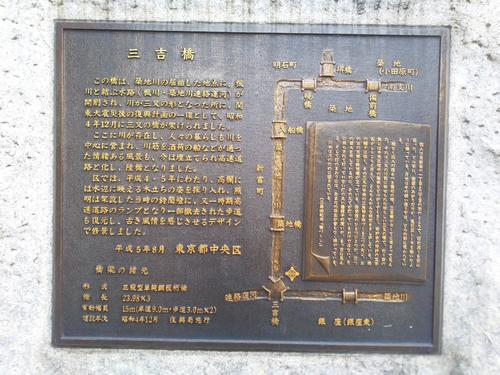
And finally started with the book containing this novel in one hand.
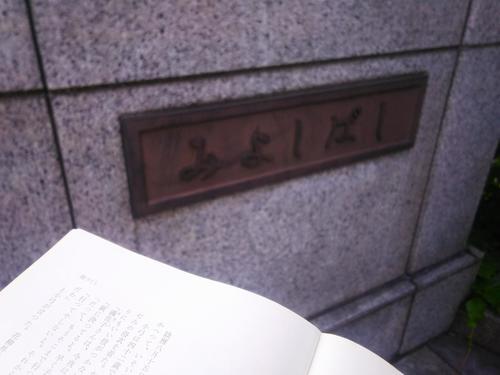
Look at the Chuo-ku government office lit by the morning sun and read the relevant part of the novel.
"The balustrade of the bridge is low, and each of them stands at the three corners that shape the triangle in the center of the three-pronged, and there is an elegant Suzuran lantern. Each of the Suzuran lamps hung four lamps, but not all of them were lit. The round polished glass of a light that is not lit by the moon looks like white. " (p. 320)
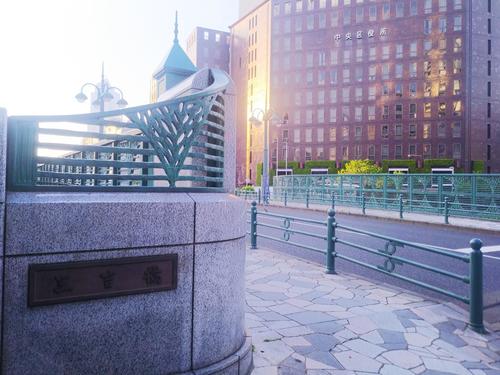
It was not a hatred moon, but a time when the sun was out, but I discovered something that seemed to be Suzuran lantern.
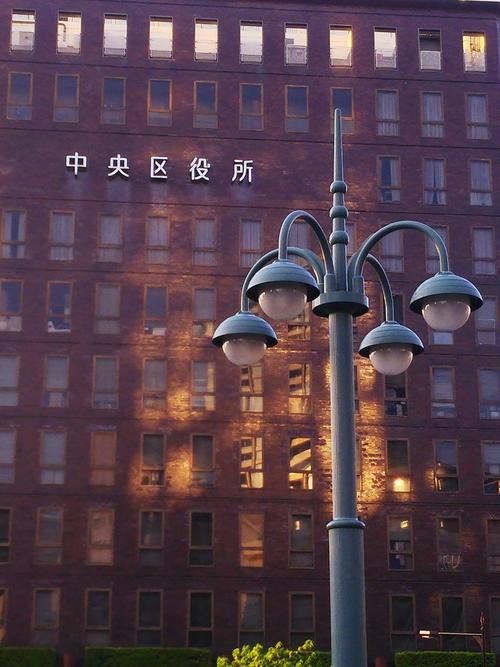
Seeing the same thing as appearing in the novel seems to have entered the world of the story and somewhat strange feeling
I was about to raise a voice of joy, but I will hold it and aim for the next bridge.
The third bridge is Tsukijibashi!
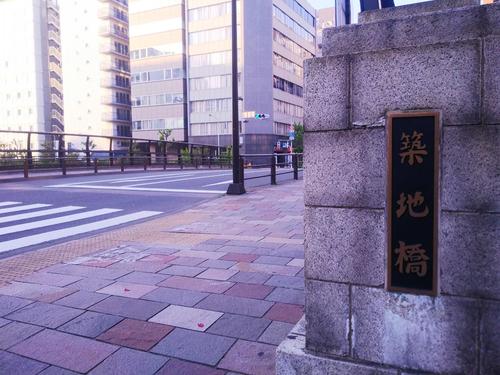

When I read the novel after finishing my wish,
"I noticed when I came here, but there were willows planted in Tadami on the side of the bridge, even in the midst of the murder of the city center. The solitary willows, which are usually unnoticed by car, stood out from the ground of concrete, and shook the leaves under the river breeze of Tadami's river. At midnight, a noisy building was dead, and only willow lived." (p. 322)
Yes, it is.
The river has been reclaimed, but
I wonder how willows are still growing in a cramped manner.
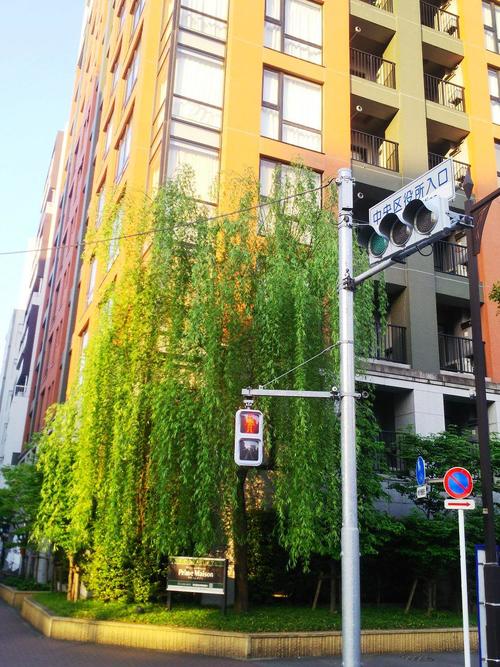
"Oh,...I wonder if this is the willow that appears in the novel ?" ?"
Walk to Irifune Bridge, the fourth bridge, and complete your wishes.
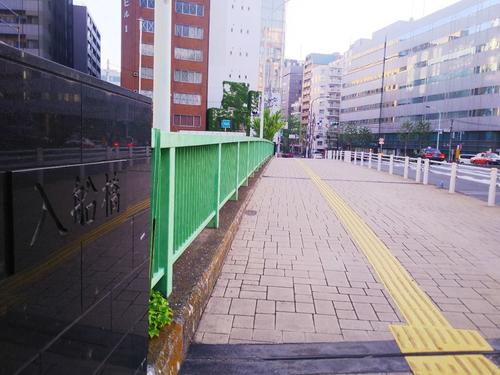
And on the way to the fifth bridge, the novel says
"Soon to the left, you will see the magnificent architecture of St. Luke Hospital on the river. It looked depressed, illuminated by the translucent shade. The huge gold cross at the top was illuminated, and as soon as they were, the red light of the aviation sign was ruined with the sights of the rooftop and the sky. The hall behind the hospital was turned off, but the outline of the Gothic-style rose window looks high and clear. The windows of the hospital still lit dark lights everywhere." (p. 325)
There is a description of it.
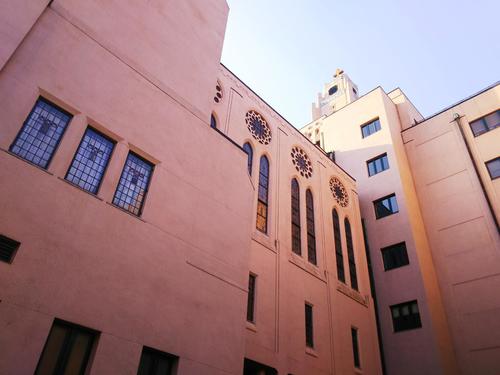
Just like the novel, rush ahead while looking at the rose window sideways.
At this time, I saw a policeman who was patroling early in the morning.
"What should I do if I can call out like a novel ?" ?"
Still, I arrived at Akatsuki Bridge in Tsukiji River Park without silence.
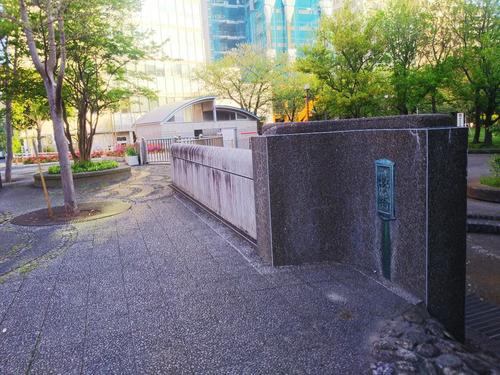
Unlike conventional bridges, I don't feel like I'm crossing the bridge, but I don't feel like I'm crossing the bridge.
When viewed from the back side, you can feel the like a bridge.
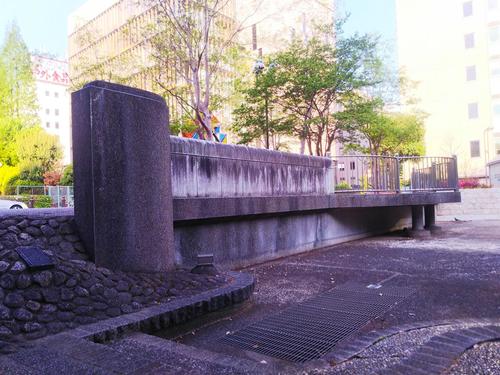
Move around the park and discover the main pillar of Sakae Bridge.
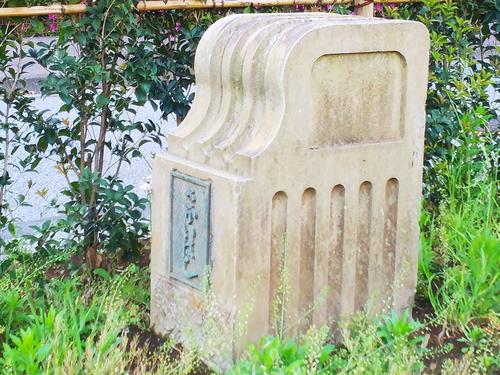
When I reached this point, I felt strongly that I wanted to cross the seventh bridge safely.
Bizen Bridge headed by a short run
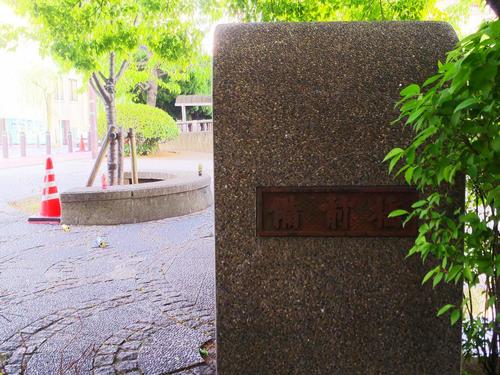
In the novel
"The concrete pillar in the shape of a shamisen box is marked as Bizen Bridge, and there is a light on the top of the pillar." (p. 329).
I remembered, compared it to the actual bridge, and did the last wish.
It is a road that I could usually walk around, but when I tried the modern version of "Bridge Tsukushi", it was
Rather, I was able to notice the scenery that was fresh and the same as the decades I had never been aware of before.
The four-character idiom called Won Shinshin is perfect!
On the other hand, there are some scenes that have become invisible due to the increase in the number of tall buildings.
A few decades later, Mansako, who appeared in the novel, and a girl of about the same age as me today.
Thinking about the original era and the Tsukiji and Shintomi areas before the Olympics in 2020.
It may be challenging the "bridge" of a new era. 
What kind of transformation has this area been undergoing by that time?...
When taking a walk in the Tsukiji / Shintomi area, remember the flow of such times.
Why don't you try an exciting and thrilling experience?
[References] (The pages in this article are based on this document.)
Yukio Mishima (1973) "Yukio Mishima Complete Works Vol. 10", Shinchosha.
[Related Articles]
Senior correspondents are also walking along the route of "Hashizukushi".
Mr. Sushi: "Walking Yukio Mishima" Bridge Tsukushi "-from Miyoshi Bridge to Bizen Bridge-"
Mr. CAM: "Bridge Tsukushi Tour" (1), "Bridge Tsukushi Tour" (2)
[Shiba Inu]
April 28, 2018 09:00
Sugimori Shrine, which has been around for nearly 1000 years since its foundation, is also known as Edo Mimori (Sugimori, Yanagimori, Kasumori) and Edo Mitomi (Sugimori, Yushima, Taninaka Tennoji). I'm familiar with Betara City. As the Seven Lucky Gods of Nihonbashi, it is worshiped as a spiritual experience in the lottery. This year, the annual festival will be held once every three years at Sugimori Shrine. It was the last Reitaisai festival in Heisei, and there is also a large carrying of miniature shrines.
What is the schedule?
Thursday, May 17 Evening Palace
18th (Fri) Headquarters carrying of miniature shrines
19th (Sat) Children carrying of miniature shrines Children fair
It's a coincidence.
We are currently looking for help with festivals and portable shrine bearers. Regardless of gender and age, those who are not neighborhood associations and those who live far away can apply! You can also use the neighborhood association's half-wearing and shower after the festival. For more information, look here. It is on a first-come, first-served basis, so if you are interested, please contact us as soon as possible.
Sugimori Shrine is located in Horidome-cho, between Ningyocho and Kodemmacho. This used to be the cornerstone of Horiwari, the cornerstone of Edo logistics. There are still many narrow and hollow roads that remain today. It is often not noticed because it does not face the main street, but it is a quiet place where the Edo atmosphere and Showa atmosphere remain. There are plenty of good points of shrines in areas that are not tourist destinations.
Shrines with many narrow roads...So it's a shooting spot! You can take a picture of a mysterious shrine in the background of a big city. There are many cheap and delicious shops in fair today. I think you can enjoy it all day while brushing around Ningyocho.
Please come and visit Chuo-ku, where the early summer is finally coming and the festival season begins.
[Hanes]
April 24, 2018 09:00
Hello. This is a new correspondent, Hanes. 
Suddenly, have you ever seen underground in Tokyo?
For those who commute by subway every day or go to the grocery section of the department store, this is the case.
The underground may be a familiar place.
However, you can see underground in Chuo-ku that such people will not know yet!
The identity of the underground is called a communal ditch.
Let's briefly explain for those who say "What is a common ditch?"
A communal ditch is a facility that houses lifelines such as telephone, electricity, gas, water and sewerage, etc. underground.
①Securing smooth road traffic (reduction of street construction)
②Securing safe lifeline accommodation space
③Improvement of Urban Landscapes
④Improvement of Urban Disaster Prevention Functions
This is the main objective.
Such an infrastructure that is difficult to see.
In Chuo-ku, you can see it from the observation windows installed at the following two locations.
◼️ Nihonbashi Service Pipe Near the B1 Exit of Nihombashi Station on the Ginza Line
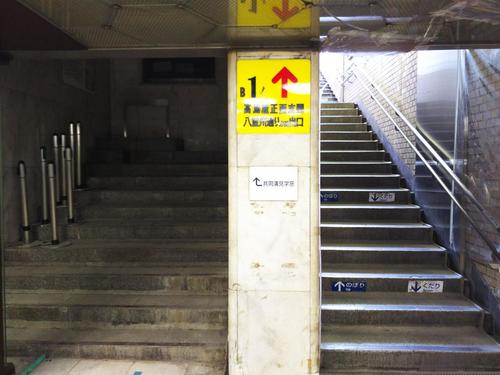
It's a bit difficult to understand, but there's a window at the end of the stairs on the left that can't get out of the ground.
This communal ditch was set up in June 1972 under the sidewalk on both sides of the national highway from Nihonbashi Muromachi 3-chome to Kyobashi 3-chome.
It seems to be 2.7 km on both sides.
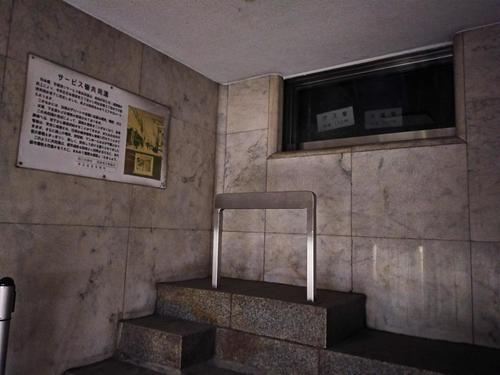
If you look into it, the infrastructure that supports the city was neatly housed!
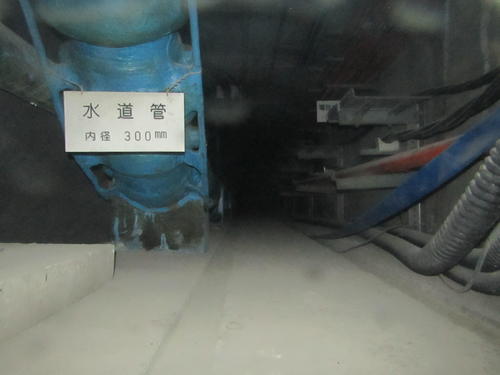
◼️ Near the A13 exit of Ginza Station on the Ginza Kyodo Mizo Ginza Line (directly connected to Matsuya)
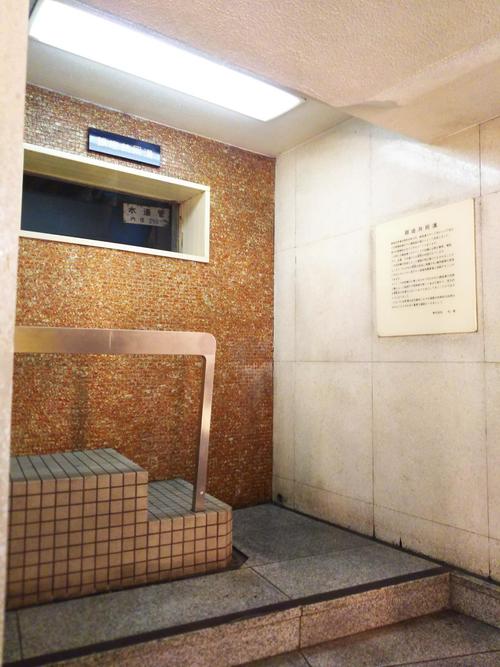
In the wake of the outbreak of cholera in 1832, the communal ditch was born in Paris the following year as a measure against sewage treatment.
In Japan, as part of the Imperial Capital Reconstruction Project following the Great Kanto Earthquake (mid-1920s).
It is said that it was the first time that it was introduced on a trial basis at three locations including Yaesu Street.
This joint ditch in Ginza was held in October 1968 as a commemorative project for 1967.
It is set up under the sidewalks on both sides of 1-chome to 8-chome on Ginza Street, and extends 2km on both sides.
As a result, there were no telephone poles from Ginza, street trees and street lights were reborn.
A row of willow trees has come to be impressed as a landscape of Ginza.
The transition is evident in the photos before the communal ditch was developed.
■State of Ginza Street in 1900
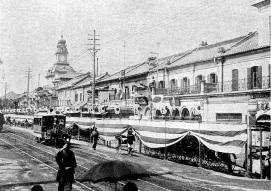
■The Ginza Kaido in 1911
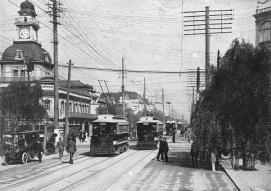
Even though something like a willow is shown, telephone poles and electric wires stand out.
I guess it's far from the clean Ginza landscape today.
It was the first time that a willow was planted in Ginza in 1877.
However, considering the history of the communal groove in mind.
It can be seen that it took about a century for willow to be established as a Ginza-like landscape.
It is the scenery of Ginza that has become commonplace now.
It was a surprising discovery that the infrastructure was realized by being housed underground.
Now that we have become a convenient world, we tend to forget about infrastructure that we don't usually see.
In Chuo-ku, you can feel it close.
When you stop by for commuting, going to school, walking, or traveling, why don't you take a peek through the window?
[References and Website]
Yuriko Koike / Ryuichiro Matsubara (2015) "Poleless Revolution: Renewing the cityscape and increasing safety" PHP Institute.
Tokyo National Highway Office, Kanto Regional Development Bureau, Ministry of Land, Infrastructure, Transport and Tourism http://www.ktr.mlit.go.jp/toukoku/chika/index.htm
[Photo]
National Diet Library “Meiji and Taisho in Photos: From the Photo Book of the Diet Library” http://ndl.go.jp/scenery_top/
All digital images from the Diet Library have expired, and the copyright protection period has expired.
[Satoken]
April 23, 2018 14:00
After two years of blanking, this is my first post in a long time. I am delighted to be able to work as a correspondent again. It has been transformed into Ginza and Nihonbashi before looking at the ward for a while. In the coming time when the climate improves, I would like to walk vigorously in the city. The start of the reopening is already famous, Nihonbashi Elementary School, located on the site of Saigo Takamori's mansion in Saigo Don, Taiga drama series.
This mansion in Koamicho was left to Toshimichi Okubo after the Meiji Restoration, returned to Kagoshima and kept a distance from the government, but once again to summarize the confused country, he came to Tokyo and settled in Tokyo. It is a place where I set up. (It may not be accurate) The information board in front of the building says that it has been since 1873. Since Satsuma Rebellion was in 1877, I am deeply moved to the government, which was shaken by the theory of conquering Korea, from this place.
The building of Nihonbashi Elementary School itself was renewed last year, and the library attached to it has become beautiful. The same building also has a library, pool, and parking lot, making it a unique way to use it in the city. I go to the library every week, but thanks to Taiga drama series, I see many people taking pictures in front of the building.
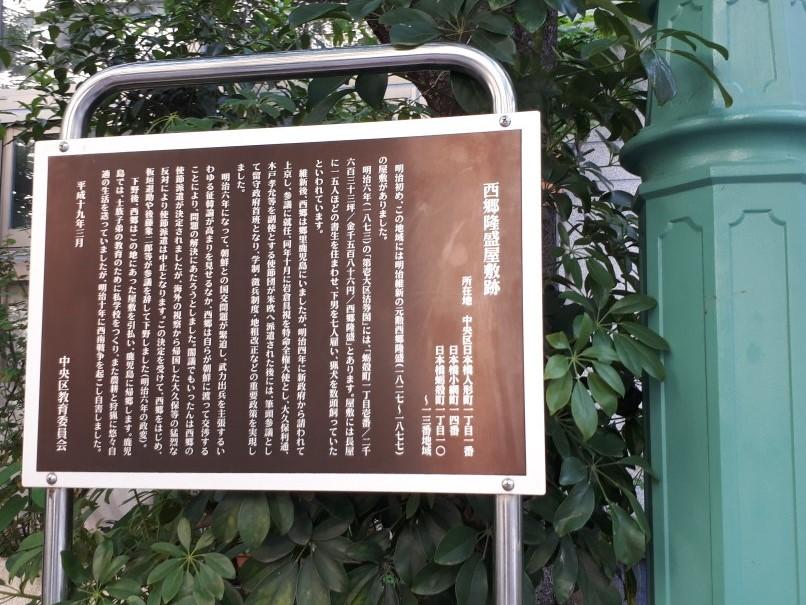
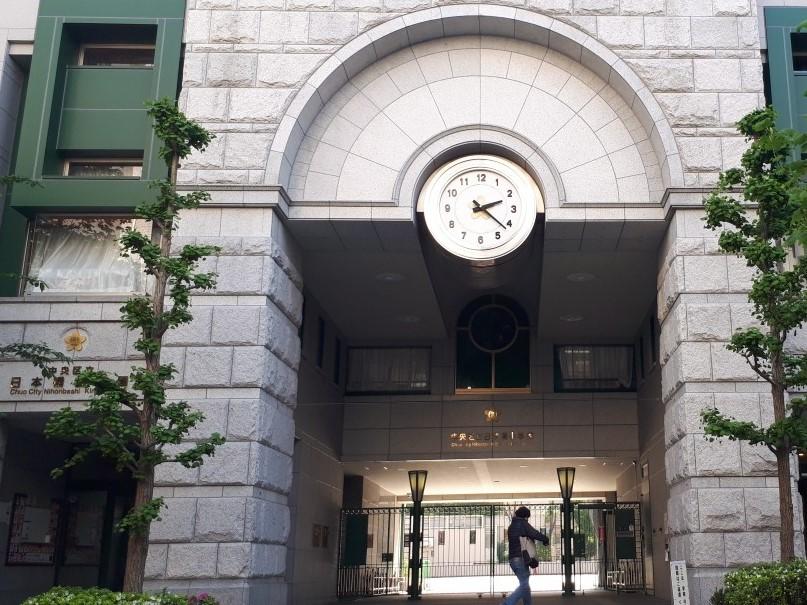 
[Hanes]
April 20, 2018 18:00
Hello! This is a new correspondent, Hanes.
The other day, I mentioned the morning activities that can be done in Chuo-ku.
Many people working in Chuo-ku say, "I'm fluttering in the morning, but I can get time at night!"
And for those who come to Tokyo for sightseeing, even after the cultural facilities are closed.
"I want to have a special experience unique to Chuo-ku!" Isn't there a lot of people who say, "I want to enjoy it at night!"
This time, we call it the first series of [Chuo-ku Night Activity Series].
We will introduce limited-time night activity information that can be done at Tsukiji for about one month from now on. night activity information that can be done at Tsukiji for about one month from now on.
What is that night activity?...This is a tour of the standing practice of Nihonbashi Opera "Iris".
When it comes to opera, there is an image of a high threshold, but please be assured!
This practice is open to the public for free.
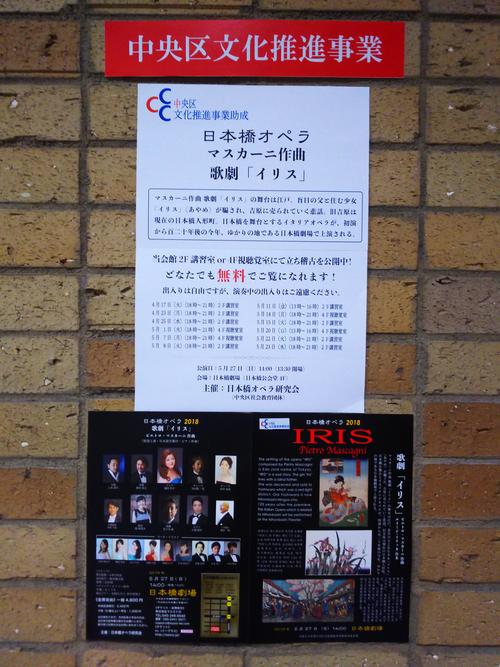
Open the door of the training room on the second floor of the Tsukiji Social Education Center, Chuo-ku, which is a rehearsal hall while pounding....
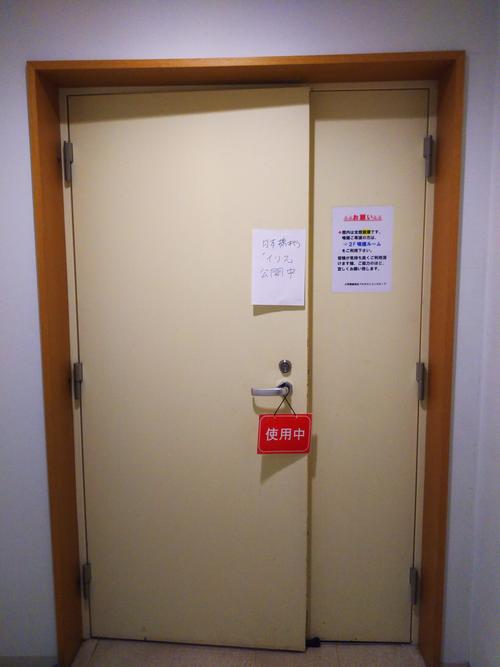
The members of Nihonbashi Opera were checking the swing.
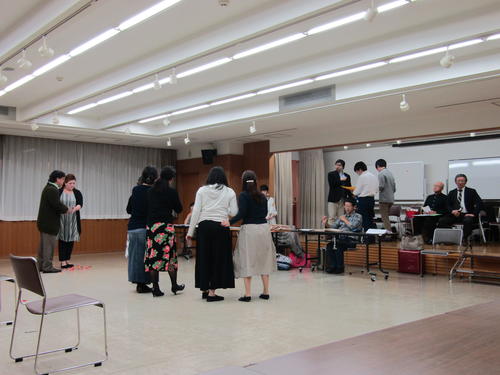
According to the commentary I received during the tour, the opera was performed.
①Music practice
②Standing training (directors give detailed explanations and guidance on how to move to each cast)
③Through training
It seems that there are three stages.
Even those who usually go to operas, plays, and concerts don't have much opportunity to see such a practice scene?
In the standing practice released this time, you can see the process of creating the work.
The thoughts and intentions contained in the movement, as well as the attention to the colors and materials of clothes and accessories.
You can learn through instruction from the director to the actor.
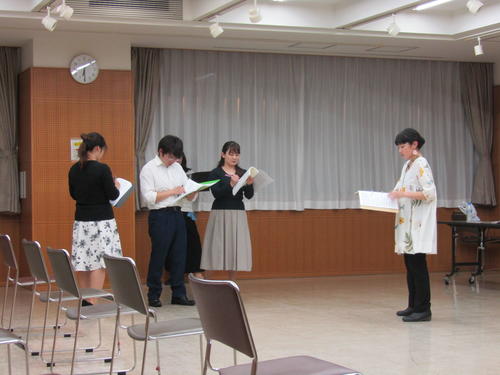
It seems that there are some improvements that can be seen only by standing training.
You can realize that opera is not a script-like one, but a "creature" whose expression differs depending on the person and place of the performer.
Also, by looking at such a place, you should be able to enjoy more happily in the actual performance, saying, "That gesture at the time of standing training was finished like this."
And not only in the actual performance, but also in practice, the sound of the piano is wonderful.
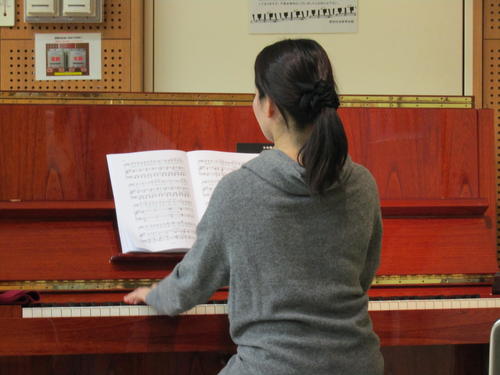
You can listen to the singing voice.
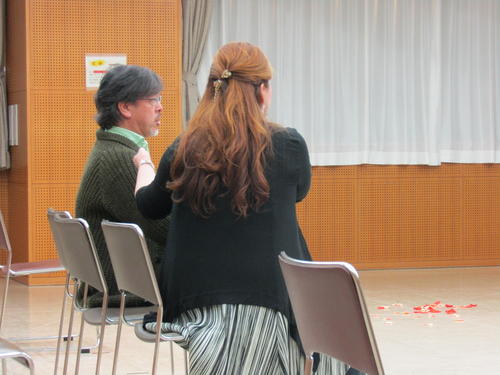
There was also a conductor, singing the relevant part instead of the actor who was absent from the practice.
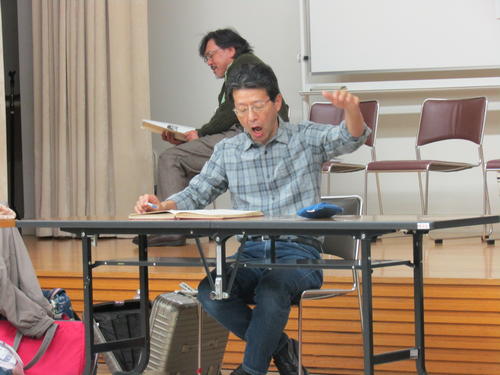
This year's performance of Nihonbashi Opera, which is being created through such practice, is a performance of this year.
The opera "Iris" composed by Pietro Mascarni (Iris) = Ayame)
It is not as well known as Puccini's "Mrs. Chocho" set in Nagasaki.
Similarly, it was influenced by japonism, which became popular in Western Europe at the end of the 19th century.
The big difference from "Mrs. Chocho" is that it uses Japanese melody, while it uses Japanese melody.
"Iris" is all Italian melodies.
However, Japanese characters such as Osaka, Kyoto, Fujiyama, Seki Shimono, Musume, and Gaisha appear in the characters and lyrics.
Isn't that also the point you want to keep in mind during the theater?
The stage of this work is Edo, where Iris, a girl living with a blind father, is deceived and sold to Yoshiwara.
It's just 120 years since it premiered in Rome.
Former Yoshihara may be located in Nihonbashi Ningyocho today, and the performance will be decided at Nihonbashi, a land related to it.
This is an opera that I would like to appreciate in Chuo-ku in this memorable year. 
Advance reservations are not required for standing lessons!
You can feel free to drop in.
Please refer to the Nihonbashi Opera website below for the date and time of public release.
http://www.music-tel.com/wargner/
Most recently, it is scheduled to be released at Tsukiji Social Education Center from 18:00 to 20:00 on April 23 (Mon), 25 (Wed), and May 1 (Tuesday).
It's a practice, but I forget the tiredness of work and look at it unintentionally.
It will be a night activity with a sense of fulfillment and satisfaction.
Whether you are a fan of opera or a beginner of opera, why not take this opportunity to experience the charm of opera set in Japan?
[Details of actual production]
Nihonbashi Opera 2018 Opera "Iris" (composed by Pietro Mascarni)
Location: Nihonbashi Theater (4th floor of Nihonbashi Public Hall, Chuo-ku, 1-31-1 Nihonbashi Kakigaracho)
Date and time: May 27, 2018 (Sun) 14:00 (Open 13:30)
Ticket information: e+ (eplus) http://eplus.jp/
All seats are free for general 4,800 yen
Central inhabitant discount 2,400 yen, children (6 years old and over)-student 1,000 yen
There is a ticket on the day. Central residents and students must present their ID card.
[Sakura is good]
April 19, 2018 14:00
On March 2, 2018, "Kumagaya Inari Shrine" completed the rebuilding of the Ginza 7-chome Building, and the shrine was transferred from Teppozu Inari Shrine for the first time in about two and a half years. It was newly built on the 1st floor of Hotel Muse Ginza store along Hanatsubaki-dori, about 10 meters away from the original location, so anyone can visit it. It is said that this Hanatsubaki-dori was frequently visited by historical novelist Shotaro Ikenami. The work of "Onihei Criminal Book" also has thirty digging around here.
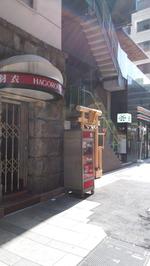 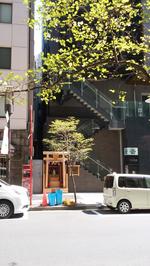 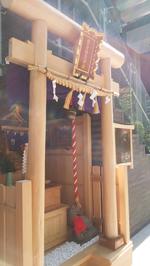
It is also a line of the long-established Chinese restaurant "Hagoromo Ginza Main Store" that has been in business for 50 years. It is thought that Inari, who has been loved and worshiped by locals for more than 800 years, is a reminder of good luck and fire prevention. This shrine is derived from the fact that after Ichinoya Genpei war in 1184, Jiro Kumagai folded a triumphal return from Kamakura to his hometown of Kumagaya City, Saitama Prefecture, and gave a talisman tag to this area. enshrined deity, 7-12-9, Ginza, Chuo-ku, enshrined the two pillars of "Ugano Mitama God" and "Hachiman Okami". It is a venerable shrine for more than 800 years every year on the old days of February. Because it was built so that it did not rain, it is preserved beautifully.
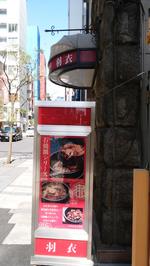 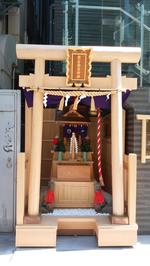 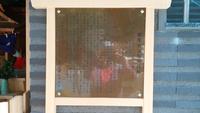
Naozane Kumagai is the retainer of Minamoto no Yoritomo, a man from the late Heian period (1141) to the early Kamakura period (1207), who is familiar with Kabuki, and is famous as the opponent in the battle of Ichinoya "Heike Monogatari-Atsumori". As a shrine related to that person, it was a shrine that locals have been protecting for more than 800 years.  The top of the shrine The top of the shrine
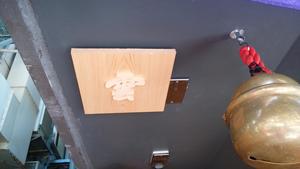
 The head of the local Edo Fire Memorial Association, the first ward, is decorated with the "Sen Company Amount" dedicated in 1988. Among them is the name "Takemoto". Ginza's town fire extinguisher `` Mokumito Kintaro Takemoto '' has a house beside Kumagaya Inari Shrine, and during the Great Tokyo Air Raid in World War II, his wife held the body of Kumagaya Inari while the war was approaching. When he tried to escape, he seemed to be unable to move suddenly felt weight. At that time, there was a true story that Kumagaya Inari was not burned, and I nodded that "fire prevention" could be a spiritual test. The head of the local Edo Fire Memorial Association, the first ward, is decorated with the "Sen Company Amount" dedicated in 1988. Among them is the name "Takemoto". Ginza's town fire extinguisher `` Mokumito Kintaro Takemoto '' has a house beside Kumagaya Inari Shrine, and during the Great Tokyo Air Raid in World War II, his wife held the body of Kumagaya Inari while the war was approaching. When he tried to escape, he seemed to be unable to move suddenly felt weight. At that time, there was a true story that Kumagaya Inari was not burned, and I nodded that "fire prevention" could be a spiritual test.
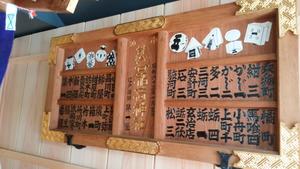
 The fox statue "Agata" on the right is holding a child and holding a fox statue "Ungata" jewel on the left is standing on both sides of the torii gate. This statue makes you feel a lot of history. I heard that the red front hanging was a hand-sewn item made by the person who lived next to Kumagaya Inari Shrine. You can see that the locals really cherished them. The fox statue "Agata" on the right is holding a child and holding a fox statue "Ungata" jewel on the left is standing on both sides of the torii gate. This statue makes you feel a lot of history. I heard that the red front hanging was a hand-sewn item made by the person who lived next to Kumagaya Inari Shrine. You can see that the locals really cherished them.
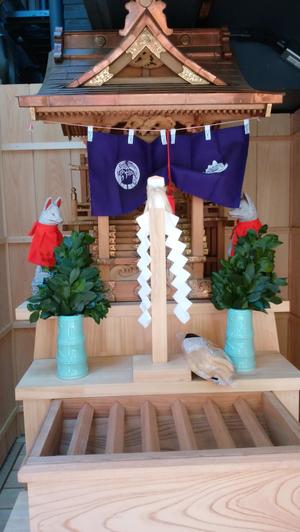
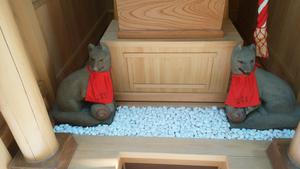
 There was Kumagaya Inari Shrine on the map of Meiji period. ①It seems that the location of the Higashi-Toyotama riverbank 6-chome was the first place. 1950 The photo below shows the renovation of the damaged shrine hall from the start of the townspeople in 1950. 1988 It seems that it was transferred to 2 places since 1988. Here, the way the town of Ginza is reborn greatly influenced "Kumagaya Inari Shrine". Since I was transferred from one place that had been around since the Edo period to 2, it was in a building or in a deep place, so I couldn't worship it, and it was one of the reasons that "Kumagaya Inari Shrine" disappeared from the map . ③In the Tak Ginza Building, it was moved to the street side close to 1, so you can now visit, but in the December 2009 issue "Guru Guru Ginza Burabura" in 1979 It is stated that Kumagaya Inari Shrine, which was in 1979, had disappeared from the map, so it seems that many people know it has disappeared. It was very disappointing. There was Kumagaya Inari Shrine on the map of Meiji period. ①It seems that the location of the Higashi-Toyotama riverbank 6-chome was the first place. 1950 The photo below shows the renovation of the damaged shrine hall from the start of the townspeople in 1950. 1988 It seems that it was transferred to 2 places since 1988. Here, the way the town of Ginza is reborn greatly influenced "Kumagaya Inari Shrine". Since I was transferred from one place that had been around since the Edo period to 2, it was in a building or in a deep place, so I couldn't worship it, and it was one of the reasons that "Kumagaya Inari Shrine" disappeared from the map . ③In the Tak Ginza Building, it was moved to the street side close to 1, so you can now visit, but in the December 2009 issue "Guru Guru Ginza Burabura" in 1979 It is stated that Kumagaya Inari Shrine, which was in 1979, had disappeared from the map, so it seems that many people know it has disappeared. It was very disappointing.
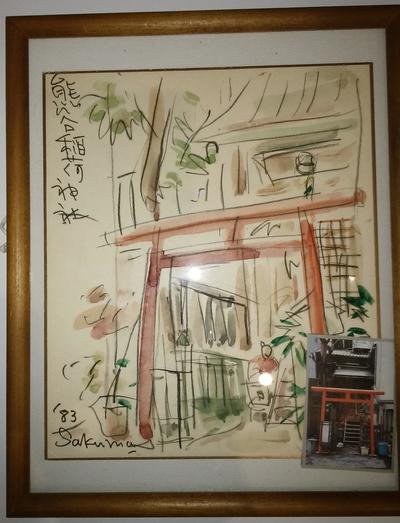
 According to the story I heard from supreme Shinto priest, when building the Hotel Muse Ginza store, the moat after Sankuma moat was deep, and a bank of nearly 10m appeared under the digging of 2m50cm, and many stones came out. When Ieyasu Tokugawa opened Edo, he ordered the construction of the Nishikuni Daimyo, dug Sanju moat in 1612, and narrowed it to nineteen in 1828 1828. People living nearby were told that human bones came out when dismantling the house. In that sense, it can be seen that "Kumagaya Inari Shrine" is protecting this land. According to the story I heard from supreme Shinto priest, when building the Hotel Muse Ginza store, the moat after Sankuma moat was deep, and a bank of nearly 10m appeared under the digging of 2m50cm, and many stones came out. When Ieyasu Tokugawa opened Edo, he ordered the construction of the Nishikuni Daimyo, dug Sanju moat in 1612, and narrowed it to nineteen in 1828 1828. People living nearby were told that human bones came out when dismantling the house. In that sense, it can be seen that "Kumagaya Inari Shrine" is protecting this land.
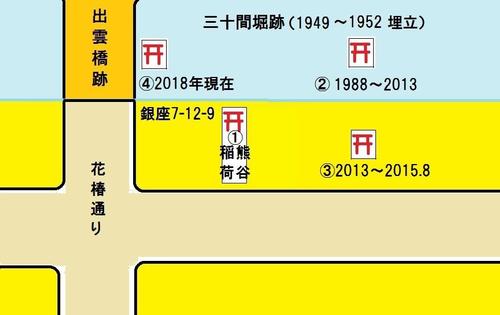
 Ginza Hatcho Shrine Tour-Tokyo Chuo-ku Tourist Guide Map Ginza Hatcho Shrine Tour-Tokyo Chuo-ku Tourist Guide Map
 a Sachi Inari Shrine-Ginza 1-chome (Namiki-dori St.) a Sachi Inari Shrine-Ginza 1-chome (Namiki-dori St.)
 b Ginza Inari Shrine ※It is usually closed to the public. b Ginza Inari Shrine ※It is usually closed to the public.
 c Asahi Inari Shrine-Ohiro Asahi Building c Asahi Inari Shrine-Ohiro Asahi Building
 d Ginza Izumi guardian of children and travelers (Citizen's Cultural Property)-Mitsukoshi Ginza 9th floor d Ginza Izumi guardian of children and travelers (Citizen's Cultural Property)-Mitsukoshi Ginza 9th floor
 e Hodo Inari Shrine-Back alley beside Tenshodo e Hodo Inari Shrine-Back alley beside Tenshodo
 f Azuma Inari Shrine-Azuma-dori, Miharakoji f Azuma Inari Shrine-Azuma-dori, Miharakoji
 g Kasumigo Inari Shrine - Ginza six g Kasumigo Inari Shrine - Ginza six
 H Success Inari Shrine ※It is usually closed to the public. H Success Inari Shrine ※It is usually closed to the public.
 J Toyo Iwaine Harri Shrine - Enter the alley from Ginza Suzuran Street. J Toyo Iwaine Harri Shrine - Enter the alley from Ginza Suzuran Street.
 K Kabuki Inari Daimyojin - right side of the front of Kabukiza Theater K Kabuki Inari Daimyojin - right side of the front of Kabukiza Theater
 As Kawayanagi in Edo reads "Edo's flower, housework, Inari and dog droppings", there are many Inari shrines in Ginza. It's a thriving regional pattern of commerce, isn't it? As Kawayanagi in Edo reads "Edo's flower, housework, Inari and dog droppings", there are many Inari shrines in Ginza. It's a thriving regional pattern of commerce, isn't it?
 Notice "Kumagaya Inari Shrine Festival" June 6, 2018 Notice "Kumagaya Inari Shrine Festival" June 6, 2018
14:00 Tepposu Inari Shrine Nakagawa Fumitaka Miyaji Prayer
14:15 Part of Kuroda Tsukisui Biwa performance "Atsumori Tairano"
14:30 Shingon sect Kichijoyama Enmeiji Dento Dai Ajarashi Kuchiba Hidenori priest, memorial service
15:00 Open Location: "Bell marche" on the 2nd floor of Hotel Muse Ginza Store
15:30 Performed at Kuroda Tsukimizu Biwa Live "Atsumori Tairano" and "Heike Monogatari"
Cake and coffee-ticket 3,000 yen
※ Fumitaka Nakagawa Kumagaya Inari Shrine is also within the religious service area of Tepposhu Shrine. Miyaji Nakagawa told me that Inari on the soil is a shrine that has a high deity and has been associated with Naozane Kumagai since the early Kamakura period, so it is desirable to have many people visit in the future .
※ Kuroda Tsukisui Biwa player Born in Kochi Prefecture Tosa Biwa founder
Studied under Satsuma Biwa landlord Josui Nakatani. After winning the National Ichimizukai Biwa Music Competition and passing the NHK Japanese music audition, he appeared on NHKFM radio "The Time of Japanese Music" for 27 years-There is a reputation for delicate biwa sounds, rich voice and expressiveness, and not only classics but also various fields Utilizing special empathy to watch Japanese musical instruments, jazz, plays, and voices in the form, he performs a wide range of voice guidance, regardless of voice.
※ Hidenori Kuchiba priest-Izumo Bridge and Izumo-cho were located, so supreme Shinto priest came from Shimane Prefecture (Izumo). Born in Shimane Prefecture in 1949, the two major trainings of Shingon, "Kokuzoku Hou and Listening Method" and "Yakihachimai Gogo" Mt. Koya-san Inner sanctuary, the cold and winter fasting of the winter, Kumano mountain ascetic hermit, worshiping the nation's Reizan, and training waterfalls.
 Please visit Kumagaya Inari Shrine, which protects the land of Ginza, Chuo-ku, Tokyo, and participate in the festival. Please visit Kumagaya Inari Shrine, which protects the land of Ginza, Chuo-ku, Tokyo, and participate in the festival.
Ginza Hatcho Shrine Tour-I hope that you can add "Kumagaya Inari Shrine" to the description on the Tokyo Chuo-ku sightseeing guide map.
(It is written with the consent of Kumagaya Inari Shrine supreme Shinto priest and Gunshu Inari Shrine Miyaji.)
|
Links
|
![]()
![]()
![]()
![]()
![]()
![]()

![]()


![]()

![]()
![]()


![]()

![]() ?"
?"

![]() ?"
?"
![]()

![]()

![]()

![]()
![]()
![]()
![]()
![]()




























